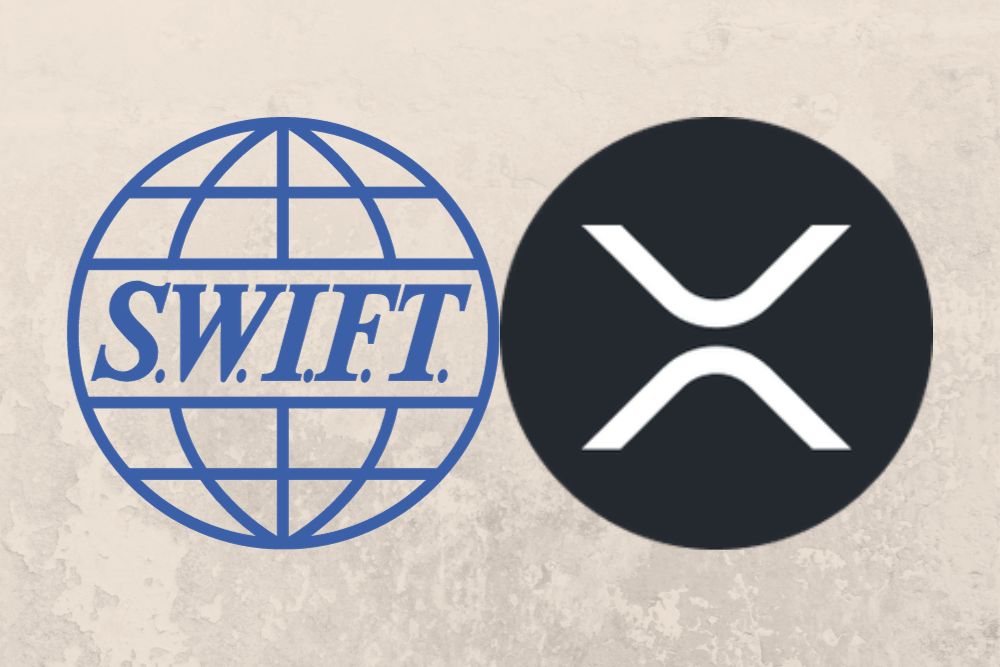

Ripple’s XRP has garnered attention as a potential disruptor to the established global financial system, particularly in the domain of cross-border payments. The cryptocurrency has been presented as a faster, more cost-efficient alternative to SWIFT, the dominant player in the international payments sector since 1973.
Ripple’s goal is to leverage XRP’s unique features to address the inefficiencies present in SWIFT’s legacy system, creating a more streamlined and cost-effective solution for global financial transactions.
SWIFT, short for the Society for Worldwide Interbank Financial Telecommunication, serves as the communication network through which more than 11,000 financial institutions in over 200 countries exchange financial messages. It processes transactions worth over $5 trillion daily, contributing to an annual volume of approximately $1.25 quadrillion. While SWIFT’s infrastructure has been foundational to the global financial system, its reliance on a network of correspondent banks often results in delays, high transaction fees, and a lack of real-time settlement.
In contrast, Ripple offers an alternative through its On-Demand Liquidity (ODL) service, which utilizes XRP as a bridge currency for real-time transactions. RippleNet, Ripple’s payment network, allows for cross-border payments to be settled almost instantly, bypassing the traditional multi-day settlement process employed by SWIFT. By eliminating intermediaries, Ripple aims to offer a more efficient and affordable solution to financial institutions, particularly in emerging markets where access to traditional banking systems is limited.
Ripple’s vision for XRP extends beyond mere competition with SWIFT. Some industry observers, including DigitalG, a former London-based fund manager and XRP advocate, have suggested that XRP could replace SWIFT entirely, leading to a significant increase in its value. DigitalG has argued that the asset could exceed $15,000 per token if it were to completely overtake SWIFT’s market share, citing the fact that XRP can be subdivided into smaller units known as “drops,” enabling higher valuations. The scale of this potential shift in the global payments landscape has led to increased speculation on the asset’s future price.
While such claims are compelling, several critical factors must be considered before XRP can realistically replace SWIFT. One key concern is the scalability of Ripple’s infrastructure. SWIFT processes an enormous volume of transactions each day, and for XRP to fully compete, the XRP Ledger must be capable of handling a similar scale of transactions without compromising reliability. Although the XRP Ledger has demonstrated rapid settlement times and efficiency, further advancements in infrastructure and liquidity management are necessary to meet the demands of the global financial system.
Additionally, regulatory uncertainty remains a significant hurdle for Ripple and XRP. The company has been engaged in an ongoing legal battle with the U.S. Securities and Exchange Commission (SEC) over the classification of the token. This legal uncertainty has created challenges in terms of institutional adoption, as many investors and financial institutions require regulatory clarity before committing to new technologies. A favourable resolution in Ripple’s legal proceedings could bolster confidence in XRP, making it a more attractive option for adoption by financial institutions worldwide.
Despite these obstacles, Ripple has received significant support from various stakeholders in the financial industry. In 2024, global investment bank Houlihan Lokey recognized Ripple as one of SWIFT’s key competitors, pointing to the advantages of Ripple’s On-Demand Liquidity service. Furthermore, prominent figures such as Mark Yusko, CEO of Morgan Creek Capital Management, have expressed interest in supporting XRP’s growth if it can achieve mainstream adoption.
While the idea of XRP replacing SWIFT remains speculative, the cryptocurrency’s unique design and operational advantages position it as a promising alternative in the global payments landscape. However, for XRP to fully realize its potential, Ripple must address key challenges related to scalability, infrastructure, and regulatory uncertainty. If these challenges are overcome, XRP could emerge as a powerful competitor to SWIFT, ushering in a new era of faster, more efficient, and more cost-effective cross-border payments.
Disclaimer: This content is meant to inform and should not be considered financial advice. The views expressed in this article may include the author’s personal opinions and do not represent Times Tabloid’s opinion. Readers are urged to do in-depth research before making any investment decisions. Any action taken by the reader is strictly at their own risk. Times Tabloid is not responsible for any financial losses.
Follow us on Twitter, Facebook, Telegram, and Google News
Why did blockchain gamers go silent when they heard this update? Because sometimes, the right…
RCO Finance (RCOF), Rexas Finance (RXS), and FloppyPepe (FPPE) are emerging as the 3 best…
HexyDog (HEXY) has made waves in the crypto presale market by raising over $400,000. This…
Investor focus on high-potential altcoins prompts an essential question about where $100 will generate its…
The prospect of XRP reaching a price point of $100 has been a topic of…
The price performance of Shiba Inu has been marked by volatility over recent months. While…